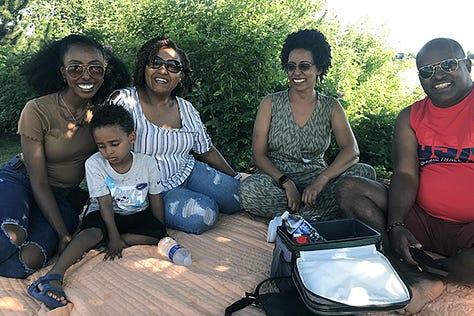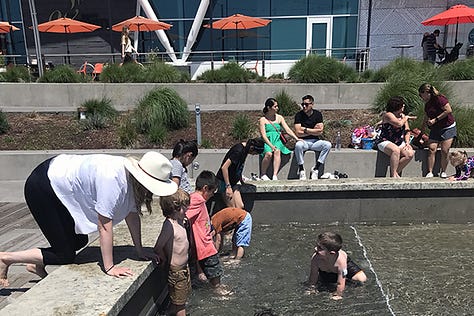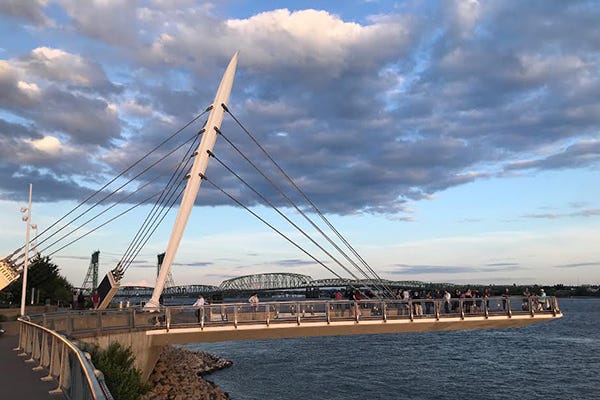I write about stories of connection and community, so I thought today I’d share my own experience of the neighborhood where I’ve lived for the past three and a half years. In 2019, I moved to Vancouver, Washington, after living my adult life in Brooklyn, New York. For several years leading up to that, I had thought about moving to a less congested city, but it took time to imagine what that might look like. My sister lived in Portland, Oregon, a city I loved and visited. She gave me the idea of living in Vancouver.
Vancouver is a small city on the north bank of the Columbia River; its neighbor on the other side is Portland, Oregon. Its nickname, “the ‘Couv”, grew in popularity to provide the community with a name that described its uniqueness to its neighbor and to the more recognizable Vancouver in southern British Columbia.
Vancouver is a growing city due in part to a well-planned expansion of its waterfront and a revitalization of its local art and cultural scene. What was once a port is now 35 acres of mixed-use urban development, including a seven acre park, restaurants and wineries, shops, office space, hotels, and housing.
When I first moved to the waterfront, I thought it was temporary, that I’d stay there for a year or two and find a different place to live as other buildings went up. Though over time I found it relatively easy to enjoy the quiet on the waterfront when the crowds aren’t here, during the mornings or overcast days.
I fell in love with the Columbia River, a real working river. Barges travel this river, carrying over half of the wheat exported from the U.S. In the spring, fishermen troll up and down outside my living room window when the spring coho salmon is in season. This year, a large group of sea lions got in on the action, playfully swimming and barking at each other.
My neighbors enjoy living here, and there is a beautiful, diverse mix of people. With the pandemic behind us, more lingering conversations happen in the lobby, near the management office, or outside the elevators. These casual gatherings, lost during Covid-19, are more nurturing than I had realized.
I’ve come to even enjoy the weekend crowds, watching people enjoy themselves. Families come for picnics, and the kids play in a sculptured map of the river that, in the summer, cascades water, sending it down boulders where people of all ages sit and watch the kids play. Young couples come to cuddle on rocks or benches near the water, and even folks from Portland trek over the I-5 bridge. In the summer, bands play on the lawn in the early evening. In December, crowds gather to look at the fleet of Christmas ships that cruise the river, lit up and playing holiday tunes, a tradition over six decades.
People seem more relaxed around water. This waterfront reminds me of some towns in Italy with a promenade on the water, where people stroll at dusk or after eating.
Mothers tell me they like that the waterfront park is child-friendly. Because families can enjoy it without needing to spend money (though there are plenty of places to spend it), I see an excellent snapshot of the diversity of Vancouver gathered in one place. Seeing my neighborhood enjoyed through the eyes of others gives me a greater appreciation for it.



It's a gift to have two homes, one I return to now as a visitor. When I return to New York, I see it with fresh eyes, returning to places I love in Brooklyn and discovering new things. Because my time is limited there, I take greater advantage of its bounty.
Exercise
Write down three or more things that you enjoy about the neighborhood where you live.
How has it changed since you first moved there?
Reflect on ways you might engage more with what you love about your neighborhood. For example, are there activities you have thought about participating in but haven’t yet? Sometimes out of habit or routine, we don’t take full advantage of everything a place has to offer.
Feel free to share about your neighborhood in the comments below!






